VARIOUS ARTISTS / “Cape Verde Mixtape”
Always bear in mind that the people are not fighting for ideas, for the things in anyone’s head. They are fighting to win material benefits, to live better and in peace, to see their lives go forward, to guarantee the future of their children. . . —Amilcar CabralAh, Cape Verde, a cluster of small islands off the bulging coast of West Africa, colonized by the Portuguese and liberated by a sixties independence movement led by Amilcar Cabral. During the seventies, Cabral was my major political and theoretical inspiration—a fighter who emphasized that they were not militarist and that the gun should not supersede the book; a thinker who emphasized praxis—developing ideas from assessments of reality and putting those ideas into practice.
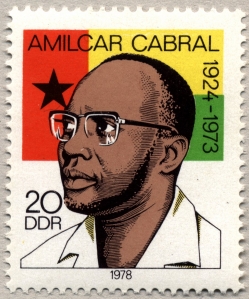 One of Cabral’s foundational principles was that it was necessary to “return to the source.” The source was/is the people—not just an unthinking nationalism that emphasized false boundaries: after all there are no lines on the ground saying that on one side it is this country and on another side it is that country.
Cabral’s party, the PAIGC, fought to liberate both the islands of Cape Verde and the small mainland nation of Guinea Bissau. In contradistinction to classic guerilla warfare theory that mandated a need for mountains or other remote locations where the fighters could hide, Cabral asserted that “our people are our mountains.”
This all may seem like it has little to do with music but wise ones can look at a seed and see a tree. Cabral’s assertion about returning to the source is borne out today by new music from three leading Cape Verdian musicians, none of whom was actually born in Cape Verde. That all three of them identify themselves and their music as Cape Verdean is a testimony to how deeply the ideas of Cabral are reflected in its people, both at home and abroad.
The music that Lura, Boy de Mendes and Sara Tavares have produced is fascinating in its subtle richness. This trio has produced recordings which are easily identified as Cape Verdian, as continuing a distinct musical tradition and yet at the same time their songs are forward looking amalgams that reflect a love for the local balanced by an incorporation of international influences. By walking on both legs, modernity and tradition are linked to produce a mature and satisfying whole.
It may not sound like it at first listen but this is truly revolutionary music. It’s a revolution in the consciousness and goals of artists who are focusing on objectives other than commercial success. Moreover, the primary audience is those conscious of Cape Verdean culture, whether they be natives who speak Creole or fans worldwide who love and respect Cape Verde’s musical culture, an immensely rich culture whose diversity and depth is in inverse proportion to the size of the islands.
One of Cabral’s foundational principles was that it was necessary to “return to the source.” The source was/is the people—not just an unthinking nationalism that emphasized false boundaries: after all there are no lines on the ground saying that on one side it is this country and on another side it is that country.
Cabral’s party, the PAIGC, fought to liberate both the islands of Cape Verde and the small mainland nation of Guinea Bissau. In contradistinction to classic guerilla warfare theory that mandated a need for mountains or other remote locations where the fighters could hide, Cabral asserted that “our people are our mountains.”
This all may seem like it has little to do with music but wise ones can look at a seed and see a tree. Cabral’s assertion about returning to the source is borne out today by new music from three leading Cape Verdian musicians, none of whom was actually born in Cape Verde. That all three of them identify themselves and their music as Cape Verdean is a testimony to how deeply the ideas of Cabral are reflected in its people, both at home and abroad.
The music that Lura, Boy de Mendes and Sara Tavares have produced is fascinating in its subtle richness. This trio has produced recordings which are easily identified as Cape Verdian, as continuing a distinct musical tradition and yet at the same time their songs are forward looking amalgams that reflect a love for the local balanced by an incorporation of international influences. By walking on both legs, modernity and tradition are linked to produce a mature and satisfying whole.
It may not sound like it at first listen but this is truly revolutionary music. It’s a revolution in the consciousness and goals of artists who are focusing on objectives other than commercial success. Moreover, the primary audience is those conscious of Cape Verdean culture, whether they be natives who speak Creole or fans worldwide who love and respect Cape Verde’s musical culture, an immensely rich culture whose diversity and depth is in inverse proportion to the size of the islands.
* * *
 Maria de Lurdes Pina Assunção, bka Lura, was born in 1975 in Lisbon to Cape Verdian parents. She grew up in a community of emigrants and exiles. As a youth she was interested in dance and swimming and gave no serious thought to music as a career.
Her professional career as a singer started with she was invited to participate in a recording session with Juka, an artist from Sao Tome and Principe. One break led to another and before long she was doing duets with a number of artists and in 1997 also landed a spot on Red Hot + Lisbon, an AIDS awareness project and recording. In 2007 she was one of the featured artists in Fados, a musical documentary by internationally renown Spanish film director Carlos Saura.
Maria de Lurdes Pina Assunção, bka Lura, was born in 1975 in Lisbon to Cape Verdian parents. She grew up in a community of emigrants and exiles. As a youth she was interested in dance and swimming and gave no serious thought to music as a career.
Her professional career as a singer started with she was invited to participate in a recording session with Juka, an artist from Sao Tome and Principe. One break led to another and before long she was doing duets with a number of artists and in 1997 also landed a spot on Red Hot + Lisbon, an AIDS awareness project and recording. In 2007 she was one of the featured artists in Fados, a musical documentary by internationally renown Spanish film director Carlos Saura.
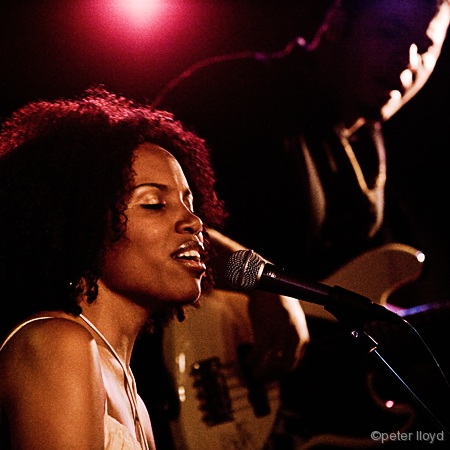 Eclipse, her just released 2009 recording, is Lura’s fifth album. Eclipse is an unexpected treat. Based on the arc of her recording career, I expected Lura’s new release to be more pop oriented because of her popularity as a performer whose concerts often turn into dances. But she has resisted dumbing down her vision and reached deeper into the musical culture of Cape Verde.
Cabral counseled that the militants should go among the people and learn about the people from the people. Lura reflects this attitude when she reveals her motivations in recording compositions old and new by Cape Verdian musicians.
I especially appreciate that rather than throw together a bunch of pleasant melodies and romantic musings, Lura has sought out veteran musicians and also chosen classic songs from Cape Verde to offer an album that has something old in the repertoire and something new in the approach and performance.
Eclipse, her just released 2009 recording, is Lura’s fifth album. Eclipse is an unexpected treat. Based on the arc of her recording career, I expected Lura’s new release to be more pop oriented because of her popularity as a performer whose concerts often turn into dances. But she has resisted dumbing down her vision and reached deeper into the musical culture of Cape Verde.
Cabral counseled that the militants should go among the people and learn about the people from the people. Lura reflects this attitude when she reveals her motivations in recording compositions old and new by Cape Verdian musicians.
I especially appreciate that rather than throw together a bunch of pleasant melodies and romantic musings, Lura has sought out veteran musicians and also chosen classic songs from Cape Verde to offer an album that has something old in the repertoire and something new in the approach and performance.
It’s important for me to identify with the compositions. When I sing a song from Cape Verde, there are certain themes that interest me, especially those that talk about situations and realities that aren’t a part of my daily experience, since I was born and have always lived in Portugal. And when I sing these compositions I kind of experience the personalities and situations of these composers from different generations, who are all very talented. —LuraLura’s parents are from different Cape Verdian islands. Her father hails from Santiago and her mother from Sao Nicolau, each island has it’s own tradition including rhythms and styles of music. As Lura matured as a musician she realized that these differences were important and began to consciously highlight the distinctive differences in her performances and recordings.
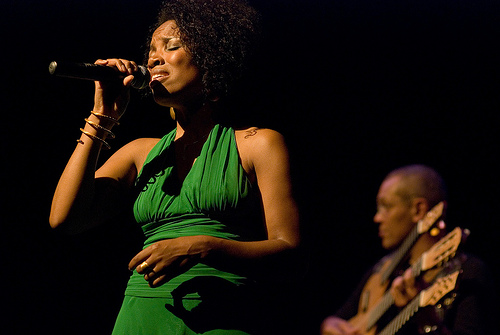
“Eclipse” is one of the classics of Cape Verdean music, and is also one of my parents’ favorite mornas. They always listened to this song as if it were one of their most beloved themes, and as the years went by it also became one of my favorite mornas. I recorded it because of this and also as a way of claiming the Windward Islands side of me. In my albums, I’ve recorded more batuko and funaná, because morna and coladeira are already more well-known internationally, but I’ve also got a Windward Islands side to me that I want to sing about. I gave the album the title Eclipse as a metaphor as well. The album is an encounter between my Leeward Islands and Windward Islands sides, between morna and funaná, between coladeira and tabanka… —LuraThe consumer focused emphasis on coming up with something new and different with each album encourages gimmicks and pandering to fashionable trends. Lura is successfully returning to her source for inspiration and authentication.
* * *
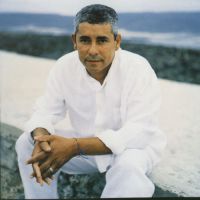 Gerard Mendes, aka Boy de Mendes, was born in 1952 in Dakar, Senegal the son of Cape Verdian parents. He went to a catholic school in Dakar and early on took up music as a profession. Over the years he sang a little of everything that was popular—Rhythm & Blues, Rock & Roll, Salsa, the Beatles, whatever, and he sang in French, English, and Spanish in addition to Portuguese and Creole.
From Senegal he moved to France in 1976 where he and his brother, Jean-Claude, along with Luis Silva and Emmanuel Lima in 1977 formed the Cabo Verde Show, which became one of the most popular recording and performing ensembles in the history of Cape Verdian music. In 1983, he moved to Nice, France and eventually produced a major hit in 1990 when he recorded his composition “Grito de bo Fidge,” which charted and became the first Cape Verdian song to be a major hit outside of the Cape Verdian community.
Rather than pursue fame and fortune, Boy de Mendes decided to follow his ears and traveled to both Brazil and the United States, meeting and working with fellow musicians. After a long recording hiatus, de Mendes put together a collaboration with his old friend Emmanuel Lima, who had become a major artist under the name of Manu Lima. The Mendes/Lima album was the 1996 recording Di Oro, which was followed by a major Mendes statement with his 1997 album Lagoa. Two years later in 1999 he produced his last album Noites De Morabeza.
Noites De Morabeza is both a return to the source and a drawing upon Mendes’ old and new world experiences on both sides of the Atlantic. Mendes called on musical cohorts from the Caribbean and Cape Verde to record. It’s striking to hear the jazz-influenced piano work of Michael Connage offering lyrical counterpoint to Mendes’ fluid, graceful melodies. The recording is replete with subtle percussive and melodic touches and yet as one listens closely, we also hear rock influenced guitars and bop oriented horn solos.
This incorporation of outside elements in the reclaiming of tradition is another example of Cabral’s thinking put into practice.
Gerard Mendes, aka Boy de Mendes, was born in 1952 in Dakar, Senegal the son of Cape Verdian parents. He went to a catholic school in Dakar and early on took up music as a profession. Over the years he sang a little of everything that was popular—Rhythm & Blues, Rock & Roll, Salsa, the Beatles, whatever, and he sang in French, English, and Spanish in addition to Portuguese and Creole.
From Senegal he moved to France in 1976 where he and his brother, Jean-Claude, along with Luis Silva and Emmanuel Lima in 1977 formed the Cabo Verde Show, which became one of the most popular recording and performing ensembles in the history of Cape Verdian music. In 1983, he moved to Nice, France and eventually produced a major hit in 1990 when he recorded his composition “Grito de bo Fidge,” which charted and became the first Cape Verdian song to be a major hit outside of the Cape Verdian community.
Rather than pursue fame and fortune, Boy de Mendes decided to follow his ears and traveled to both Brazil and the United States, meeting and working with fellow musicians. After a long recording hiatus, de Mendes put together a collaboration with his old friend Emmanuel Lima, who had become a major artist under the name of Manu Lima. The Mendes/Lima album was the 1996 recording Di Oro, which was followed by a major Mendes statement with his 1997 album Lagoa. Two years later in 1999 he produced his last album Noites De Morabeza.
Noites De Morabeza is both a return to the source and a drawing upon Mendes’ old and new world experiences on both sides of the Atlantic. Mendes called on musical cohorts from the Caribbean and Cape Verde to record. It’s striking to hear the jazz-influenced piano work of Michael Connage offering lyrical counterpoint to Mendes’ fluid, graceful melodies. The recording is replete with subtle percussive and melodic touches and yet as one listens closely, we also hear rock influenced guitars and bop oriented horn solos.
This incorporation of outside elements in the reclaiming of tradition is another example of Cabral’s thinking put into practice.
A people who free themselves from foreign domination will be free culturally only if, without complexes and without underestimating the importance of positive accretions from the oppressor and other cultures, they return to the upward paths of their own culture, which is nourished by the living reality of its environment, and which negates both harmful influences and any kind of subjection to foreign culture. Thus, it may be seen that if imperialist domination has the vital need to practice cultural oppression, national liberation is necessarily an act of culture. —Amilcar CabralIn other words one can and should use the entire body of human knowledge and experiences in constructing one’s own distinct culture. What is particularly important is the conditional consideration: “without complexes.”
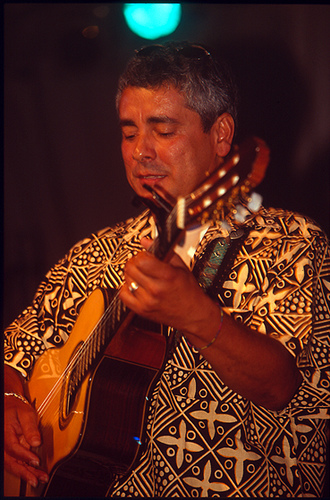 Very much like the majority of the African diaspora, this beautiful music produced by Mendes and others is a creole music, a music of mixture, a music that reflects contact (both forced and voluntary) with outside elements, yet—and how wonderful is this exception—yet, regardless of outside influences, the essence of the music, of the culture, is found in its own personality.
I am impressed with a music that so resolutely mines its own tradition even as it demonstrates great sophistication and flexibility by drawing the world into its own sphere of cultural ingredients and influences. Moreover, Mendes' music is surprisingly gentle and graceful. It certainly is unlike what we stereotypically think of when one says African music. I think Boy de Mendes is a genius of gentle, he even shouts softly.
Very much like the majority of the African diaspora, this beautiful music produced by Mendes and others is a creole music, a music of mixture, a music that reflects contact (both forced and voluntary) with outside elements, yet—and how wonderful is this exception—yet, regardless of outside influences, the essence of the music, of the culture, is found in its own personality.
I am impressed with a music that so resolutely mines its own tradition even as it demonstrates great sophistication and flexibility by drawing the world into its own sphere of cultural ingredients and influences. Moreover, Mendes' music is surprisingly gentle and graceful. It certainly is unlike what we stereotypically think of when one says African music. I think Boy de Mendes is a genius of gentle, he even shouts softly.
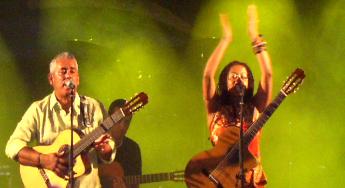 I first consciously encountered Boy de Mendes via Sara Tavares, who invited him to record and tour with her. She asked him to be an integral part of her band and not simply to do one or two cameo numbers. After listening to three of Mendes’ records, I am confident that Tavares has benefited tremendously from working with Mendes.
I first consciously encountered Boy de Mendes via Sara Tavares, who invited him to record and tour with her. She asked him to be an integral part of her band and not simply to do one or two cameo numbers. After listening to three of Mendes’ records, I am confident that Tavares has benefited tremendously from working with Mendes.
* * *
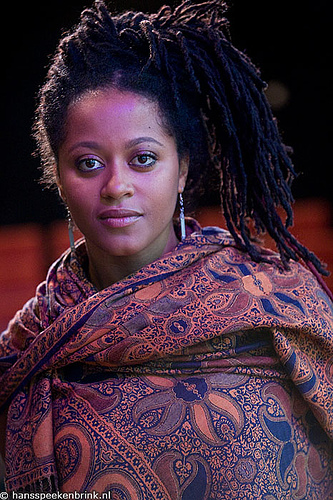 Yall know I love Sara Tavares’ music. Her new album Xinti is no exception (available soon in the USA). When I first heard it, I was not as immediately impressed as I had been with Balance or her other recordings. Once I listened closely however I was really, really impressed because Sara is not standing still. She is experimenting, she is stretching and she is heading in some very interesting directions.
Yall know I love Sara Tavares’ music. Her new album Xinti is no exception (available soon in the USA). When I first heard it, I was not as immediately impressed as I had been with Balance or her other recordings. Once I listened closely however I was really, really impressed because Sara is not standing still. She is experimenting, she is stretching and she is heading in some very interesting directions.
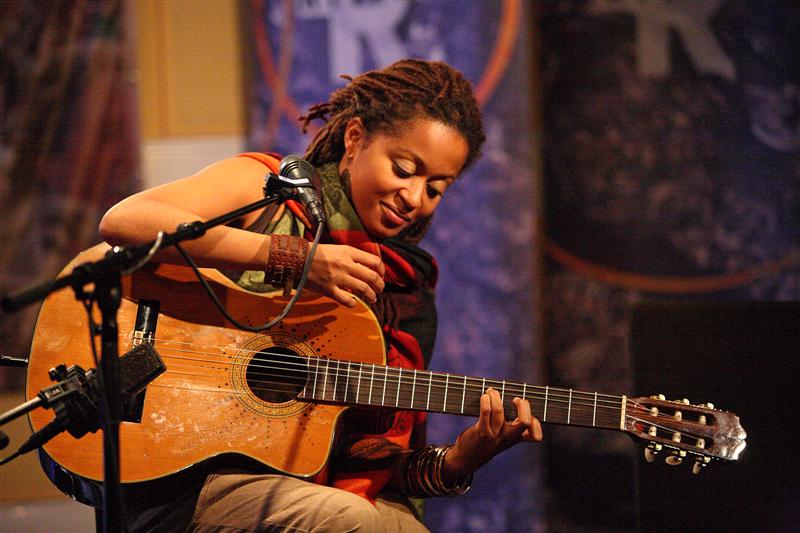 First, her guitar work just keeps getting better and better. Second, she is exploring the soprano range of her beautiful voice. Third, Xinti has a strong emphasis on the lyrics both in terms of meaning as well as stylistically. I don’t have any translations of the lyrics but even with casual listening you can tell that the words are important.
In fact, throughout the album, there are stretches when Sara is not singing but rather is reciting or talking in a conversational voice. I am not sure why she chose to do this, but it is effective.
First, her guitar work just keeps getting better and better. Second, she is exploring the soprano range of her beautiful voice. Third, Xinti has a strong emphasis on the lyrics both in terms of meaning as well as stylistically. I don’t have any translations of the lyrics but even with casual listening you can tell that the words are important.
In fact, throughout the album, there are stretches when Sara is not singing but rather is reciting or talking in a conversational voice. I am not sure why she chose to do this, but it is effective.
 I should add that Sara’s singing chops continue to be top notch. She does long tones better than almost any other female vocalist. On this album she uses overdubs to provide not only background but also to enhance the delivery with subtle vocal counterpoints. Speaking of which, check out the empyrean and exquisite “Fundi Ku Mi,” the last track on the Cape Verde Mixtape.
Like James Weldon Johnson said about Malindy, Sara’s singing on “Fundi Ku Mi” would make angels hush. I’m not sure how she does it, how she controls her voice and can hit those attention getting low tones that shake you down to your toes and at the same time issue those ethereal high notes.
I have bootlegs of live recordings and have checked out short performance videos but I’ve never experienced her live. Sara Tavares is someone I would like to see before leaving this planet.
Here is a young woman who has recorded a gospel album, a Soul/Creole album, a traditional/acoustic Cape Verde folk-oriented album, and now she is exploring her personality as a world citizen, a true Third World woman easily moving beyond simplistic dualities to embrace a holistic and wholesome approach to identity and self-development.
Xinti is awesome healing music.
—Kalamu ya Salaam
Cape Verde Mixtape Playlist
I should add that Sara’s singing chops continue to be top notch. She does long tones better than almost any other female vocalist. On this album she uses overdubs to provide not only background but also to enhance the delivery with subtle vocal counterpoints. Speaking of which, check out the empyrean and exquisite “Fundi Ku Mi,” the last track on the Cape Verde Mixtape.
Like James Weldon Johnson said about Malindy, Sara’s singing on “Fundi Ku Mi” would make angels hush. I’m not sure how she does it, how she controls her voice and can hit those attention getting low tones that shake you down to your toes and at the same time issue those ethereal high notes.
I have bootlegs of live recordings and have checked out short performance videos but I’ve never experienced her live. Sara Tavares is someone I would like to see before leaving this planet.
Here is a young woman who has recorded a gospel album, a Soul/Creole album, a traditional/acoustic Cape Verde folk-oriented album, and now she is exploring her personality as a world citizen, a true Third World woman easily moving beyond simplistic dualities to embrace a holistic and wholesome approach to identity and self-development.
Xinti is awesome healing music.
—Kalamu ya Salaam
Cape Verde Mixtape Playlist
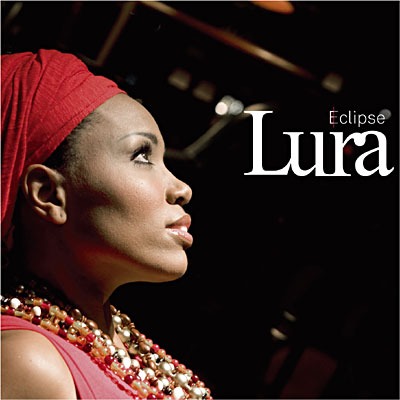 From Eclipse by Lura
01 “Um Dia”
02 “Eclipse”
03 “Quebród Nem Djosa”
04 “Queima Roupa”
05 “Canta Um Tango (With Kantango)”
From Eclipse by Lura
01 “Um Dia”
02 “Eclipse”
03 “Quebród Nem Djosa”
04 “Queima Roupa”
05 “Canta Um Tango (With Kantango)”
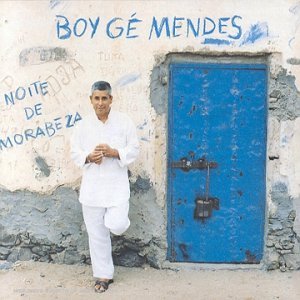 From Noite de Morabeza by Boy ge Mendes
06 “Sant anton lovers”
07 “Funana di nha bonga”
08 “Pescador”
09 “Noite de morabeza”
10 “Shambalah”
From Noite de Morabeza by Boy ge Mendes
06 “Sant anton lovers”
07 “Funana di nha bonga”
08 “Pescador”
09 “Noite de morabeza”
10 “Shambalah”
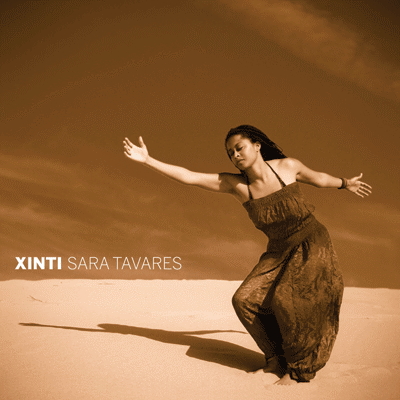 From Xinti by Sara Tavares
11 “Ponto de Luz”
12 “Pé na Strada”
13 “Bué (você é...)”
14 “Exala”
15 “Fundi Ku Mi”
From Xinti by Sara Tavares
11 “Ponto de Luz”
12 “Pé na Strada”
13 “Bué (você é...)”
14 “Exala”
15 “Fundi Ku Mi”
This entry was posted on Monday, May 18th, 2009 at 5:51 am and is filed under Contemporary. You can follow any responses to this entry through the RSS 2.0 feed. You can leave a response, or trackback from your own site.
2 Responses to “VARIOUS ARTISTS / “Cape Verde Mixtape””
Q Says:
May 18th, 2009 at 11:31 am
May 18th, 2009 at 11:31 am
Man…everytime you do this, I keep remembering that I need to learn Portuguese! Beautiful music, but once again, the Mixtape format doesn’t do it justice when you want to REWIND a song. LOL!
cruzcontrol Says:
May 23rd, 2009 at 4:18 pm
May 23rd, 2009 at 4:18 pm
Boy Ge Mendes, Shambalah!
Love it, so soothing, so peaceful.
Thank you!
Leave a Reply
| top |